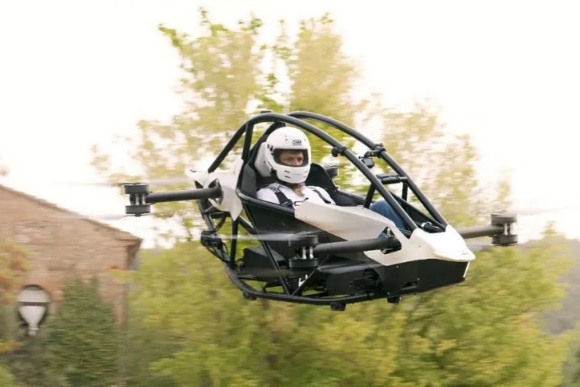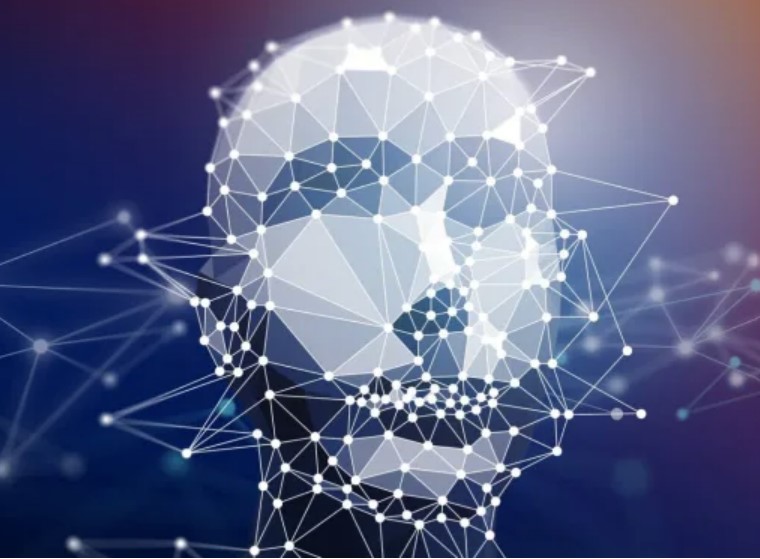
by venturebeat -- Dean Takahashi -- Jetson made a splash unveiling its drone-like electric flying vehicle before and now the company has raised a $15 million seed round to help launch the Jetson One in 2024. The vehicle is an electric Vertical Takeoff and Landing (eVTOL) aircraft that will cost $98,000 and won’t require a pilot’s license to fly, said Rikard Steiber, an investor and senior board adviser in an interview with VentureBeat. That’s still expensive, but it’s another example of science fiction — notably from The Jetsons show in the 1960s — coming to life. “Humanity’s oldest dream has been to fly, and we dreamt about having superpowers and flying out and save the world,” Steiber said. We had the Wright Brothers more than 100 years ago, and Leonard da Vinci and even the myth of Icarus.” Other investors include rapper Will.i.am, who has ordered the first Jetson One off the assembly line, as well as board member Luca Spada.
The investment further positions Jetson as a frontrunner in the emerging field of urban air mobility. This kind of vehicle operates under a Class G license in unregulated air space. It is allowed to go no faster than 63 miles per hour and no higher than 1,500 feet off the ground, Steiber said. It has a flying time of about 20 minutes, which means it might be able to fly a range of 21 miles. Jetson One is categorized in the U.S. as an ultralight aircraft, which can only be flown during daylight in unregulated space. There are various applications, from emergency services to military uses, but the company is focuses on those who want to take the vehicle for short flights. It takes off vertically like a helicopter and lands the same way. It’s one meter wide and so you can fit it in the back of a truck. Other flying cars are more like air taxis and those require pilot’s licenses to fly. Tomasz Patan and Peter Ternström started Jetson in 2017 with the intention of making everyone a pilot. They scored huge hits on social media, garnering more than 48 million views on YouTube with help from comedian Stephen Colbert.
Flying a Jetson One.
Opinion by Douglas MacKinnon, opinion contributor — theHill.com — Back when I worked in the Pentagon, a colonel in my office would …

By Dan Falk -- scientificamerican.com -- -- More than 400 years ago, Galileo showed that many everyday phenomena—such as a ball rolling down an incline or a chandelier gently swinging from a church ceiling—obey precise mathematical laws. For this insight, he is often hailed as the founder of modern science. But Galileo recognized that not everything was amenable to a quantitative approach. Such things as colors, tastes and smells “are no more than mere names,” Galileo declared, for “they reside only in consciousness.” These qualities aren’t really out there in the world, he asserted, but exist only in the minds of creatures that perceive them. “Hence if the living creature were removed,” he wrote, “all these qualities would be wiped away and annihilated.” Since Galileo’s time the physical sciences have leaped forward, explaining the workings of the tiniest quarks to the largest galaxy clusters. But explaining things that reside “only in consciousness”—the red of a sunset, say, or the bitter taste of a lemon—has proven far more difficult. Neuroscientists have identified a number of neural correlates of consciousness—brain states associated with specific mental states—but have not explained how matter forms minds in the first place. As philosopher David Chalmers asked: “How does the water of the brain turn into the wine of consciousness?” He famously dubbed this quandary the “hard problem” of consciousness.
Scholars recently gathered to debate the problem at Marist College in Poughkeepsie, N.Y., during a two-day workshop focused on an idea known as panpsychism. The concept proposes that consciousness is a fundamental aspect of reality, like mass or electrical charge. The idea goes back to antiquity—Plato took it seriously—and has had some prominent supporters over the years, including psychologist William James and philosopher and mathematician Bertrand Russell. Lately it is seeing renewed interest, especially following the 2019 publication of philosopher Philip Goff’s book Galileo’s Error, which argues forcefully for the idea.
Artificial wombs for premature babies -- by Cassandra Willyard MIT Technology Review -- US Food and Drug Administration advisors met to discuss how to move research on artificial wombs from animals into humans. These medical devices are designed to give extremely premature infants a bit more time to develop in a womblike environment before entering the outside world. They have been tested with hundreds of lambs (and some piglets), but animal models can’t fully predict how the technology will work for humans. “The most challenging question to answer is how much unknown is acceptable,” said An Massaro, FDA’s lead neonatologist in the Office of Pediatric Therapeutics, at the committee meeting. That’s a question regulators will have to grapple with as this research moves out of the lab and into first-in-human trials.
What is an artificial womb?
An artificial womb is an experimental medical device intended to provide a womblike environment for extremely premature infants. In most of the technologies, the infant would float in a clear “biobag,” surrounded by fluid. The idea is that preemies could spend a few weeks continuing to develop in this device after birth, so that “when they’re transitioned from the device, they’re more capable of surviving and having fewer complications with conventional treatment,” says George Mychaliska, a pediatric surgeon at the University of Michigan. One of the main limiting factors for survival in extremely premature babies is lung development. Rather than breathing air, babies in an artificial womb would have their lungs filled with lab-made amniotic fluid, that mimics the amniotic fluid they would have hadjust like they would in utero. Neonatologists would insert tubes into blood vessels in the umbilical cord so that the infant’s blood could cycle through an artificial lung to pick up oxygen. The device closest to being ready to be tested in humans, called the EXTrauterine Environment for Newborn Development, or EXTEND, encases the baby in a container filled with lab-made amniotic fluid. It was invented by Alan Flake and Marcus Davey at the Children’s Hospital of Philadelphia and is being developed by Vitara Biomedical.
Khazen History


Historical Feature:
Churches and Monasteries of the Khazen family

St. Anthony of Padua Church in Ballouneh
Mar Abda Church in Bakaatit Kanaan
Saint Michael Church in Bkaatouta
Saint Therese Church in Qolayaat
Saint Simeon Stylites (مار سمعان العامودي) Church In Ajaltoun
Virgin Mary Church (سيدة المعونات) in Sheilé
Assumption of Mary Church in Ballouneh
1 - The sword of the Maronite Prince
2 - LES KHAZEN CONSULS DE FRANCE
3 - LES MARONITES & LES KHAZEN
4 - LES MAAN & LES KHAZEN
5 - ORIGINE DE LA FAMILLE
Population Movements to Keserwan - The Khazens and The Maans
ما جاء عن الثورة في المقاطعة الكسروانية
ثورة أهالي كسروان على المشايخ الخوازنة وأسبابها
Origins of the "Prince of Maronite" Title
Growing diversity: the Khazin sheiks and the clergy in the first decades of the 18th century
Historical Members:
Barbar Beik El Khazen [English]
Patriach Toubia Kaiss El Khazen(Biography & Life Part1 Part2) (Arabic)
Patriach Youssef Dargham El Khazen (Cont'd)
Cheikh Bishara Jafal El Khazen
Patriarch Youssef Raji El Khazen
The Martyrs Cheikh Philippe & Cheikh Farid El Khazen
Cheikh Nawfal El Khazen (Consul De France)
Cheikh Hossun El Khazen (Consul De France)
Cheikh Abou-Nawfal El Khazen (Consul De France)
Cheikh Francis Abee Nader & his son Yousef
Cheikh Abou-Kanso El Khazen (Consul De France)
Cheikh Abou Nader El Khazen
Cheikh Chafic El Khazen
Cheikh Keserwan El Khazen
Cheikh Serhal El Khazen [English]
Cheikh Rafiq El Khazen [English]
Cheikh Hanna El Khazen
Cheikha Arzi El Khazen
Marie El Khazen
